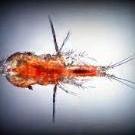-
Topics
-
Latest Update
-
0
WTB photosynthetic Gorgonians
Looking for photosynthetic gorgonians . Pls pm price/ location -
3
WTS corals (GMK, Sentosa, Beach Bum Monti etc)
Hi guys, at the moment left E. The rest are reserved/sold. Thx! -
0
WTS AF90 media reactor
$90 Contact me at 92372730 Sent from my SM-G998B using Tapatalk -
-
7
Waterbox Frag 104.5 set
Price for tank? Sent from my SM-S908E using Tapatalk
-








Recommended Posts
Join the conversation
You can post now and register later. If you have an account, sign in now to post with your account.